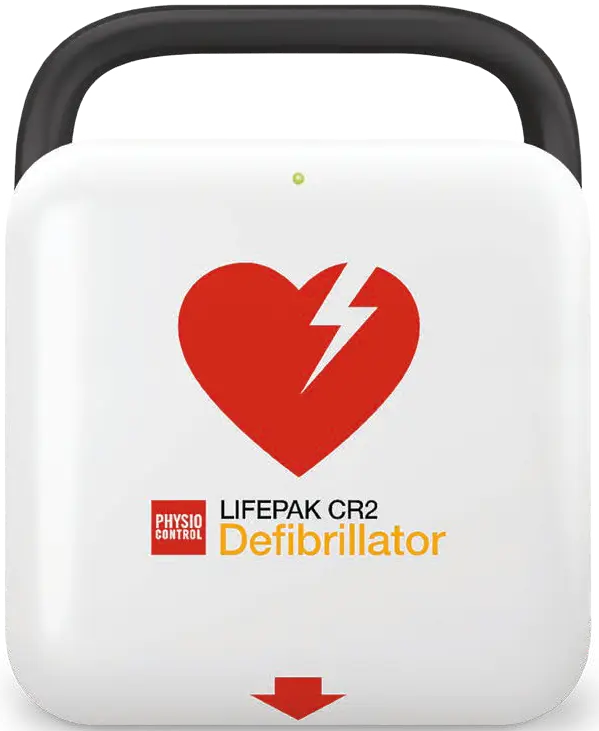Sudden Cardiac Arrest (SCA) Is a Leading Cause of Death in Canada

Unfortunately, thousands of incidents of SCA occur annually in workplaces, public spaces, and homes each year. The availability and proper use of an Automated External Defibrillator (AED) can significantly improve survival rates. This guide provides essential information about AEDs, including key safety insights, legal requirements, and top considerations when purchasing or maintaining an AED in Canada.
What is an Automated External Defibrillator (AED)?
An Automated External Defibrillator (AED) is a portable medical device designed to deliver an electric shock to the heart in cases of sudden cardiac arrest. AEDs analyze the heart's rhythm and, if necessary, administer a shock to restore a normal heartbeat. They are designed to be user-friendly, even for individuals without medical training, making them vital for emergency response in various environments.
Why Are AEDs Critical in Canada?
- High Incidence of Sudden Cardiac Arrest: Each year, over 50,000 Canadians experience SCA outside of hospital settings.
- Increased Survival Rates: Studies show that using an AED within the first few minutes of SCA can increase survival rates by up to 75%. This is compared to less than a 10% survival rate with CPR alone.
- Widespread Accessibility: Many provinces and municipalities in Canada are investing in public-access defibrillation programs. AEDs are also being added to high-traffic areas such as airports, schools, shopping malls, and sports facilities.
Key Features to Look for in an AED
When choosing an AED, it's important to consider specific features that enhance usability and effectiveness. Here are the top factors:
- Ease of Use: Look for devices with clear visual and audio instructions.
- Durability: Ensure the AED is built to withstand harsh conditions, especially for outdoor or industrial environments.
- Battery Life: Longer-lasting batteries reduce maintenance costs and ensure readiness during emergencies.
- Maintenance Alerts: Some AEDs have self-diagnostic features that alert users when maintenance is required.
Legal Requirements and Guidelines for AEDs in Canada
Several provinces have implemented legislation or guidelines to promote the availability and use of AEDs:
- Ontario: The Defibrillator Registration and Public Access Act when enacted will AEDs in public and some private buildings.
- Manitoba: Requires AEDs in high-traffic public places, with strict maintenance and signage guidelines.
- British Columbia: Encourages the installation of AEDs in workplaces and community centers through various grant programs.
Employers and facility managers should check with local authorities to ensure compliance with provincial regulations.
Best Practices for AED Maintenance
Proper maintenance ensures the AED remains functional when needed. Follow these best practices:
- Regular Inspections: Check the device for physical damage and ensure the battery and electrode pads are within their expiration dates.
- Routine Testing: Many AEDs perform automatic self-tests, but periodic manual testing is recommended.
- Training: Ensure that staff and frequent users are trained in CPR and AED use. Many organizations in Canada offer certified training programs.
- Registration: Register your AED with local emergency services to improve response times.
Top AED Brands in Canada
The Canadian market offers a variety of AED brands, each with unique features and benefits. Here are some of the most trusted names:
-
Zoll AED 3: Offers real-time CPR feedback, built in pediatric capabilities, LCD Screen, and has pads and batteries that both last for 5 years.
- Zoll AED Plus: Offers real-time CPR feedback and has pads and batteries that both last for 5 years.
- Physio-Control Lifepak CR2: Fully bilingual and built in pediatric capabilities.
Where to Buy AEDs in Canada
AEDs can be purchased from specialized medical equipment suppliers, online retailers, and safety organizations. Ensure that the supplier is authorized and provides after-sales support, including maintenance services and training. AED.ca is a leading AED company in Canada and the products and expertise to ensure that you are fully satisfied.
Government and Community Programs Supporting AED Access
Various programs across Canada aim to improve AED accessibility:
- Heart and Stroke Foundation AED Program: Facilitates the placement of AEDs in communities and offers training.
- Public-Access Defibrillation (PAD) Programs: Some municipalities run PAD programs to ensure AEDs are available in public spaces.
Conclusion
Automated External Defibrillators (AEDs) are critical life-saving devices that can mean the difference between life and death in cases of sudden cardiac arrest. In Canada, growing awareness and support from government programs have made AEDs more accessible. By understanding the key features, legal requirements, and best practices for maintenance, individuals and organizations can contribute to safer communities.
If you're considering purchasing an AED or want to learn more about training and compliance in Canada, contact Canada's AED Company: AED.ca. Together, we can create a safer environment for everyone.






